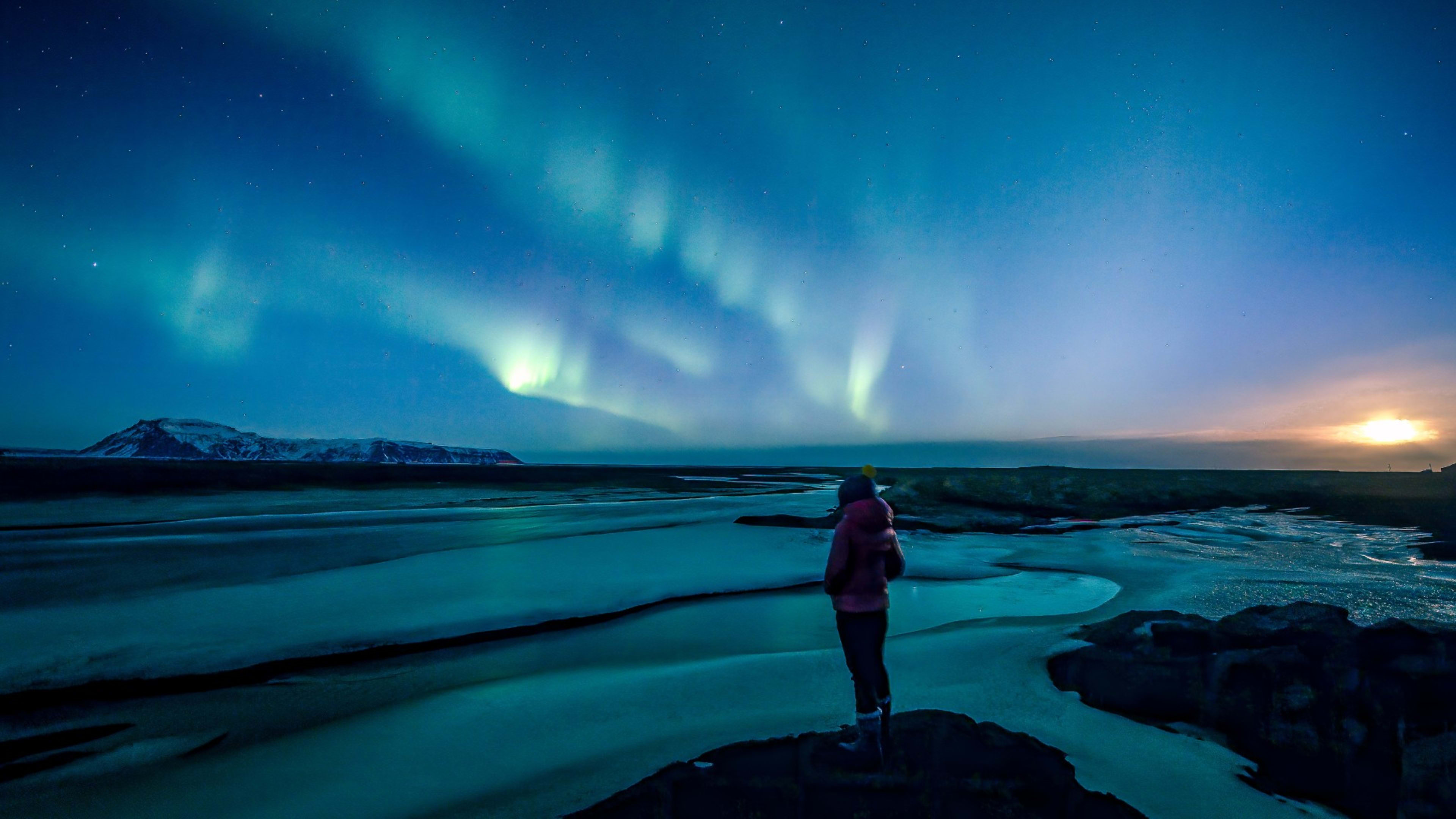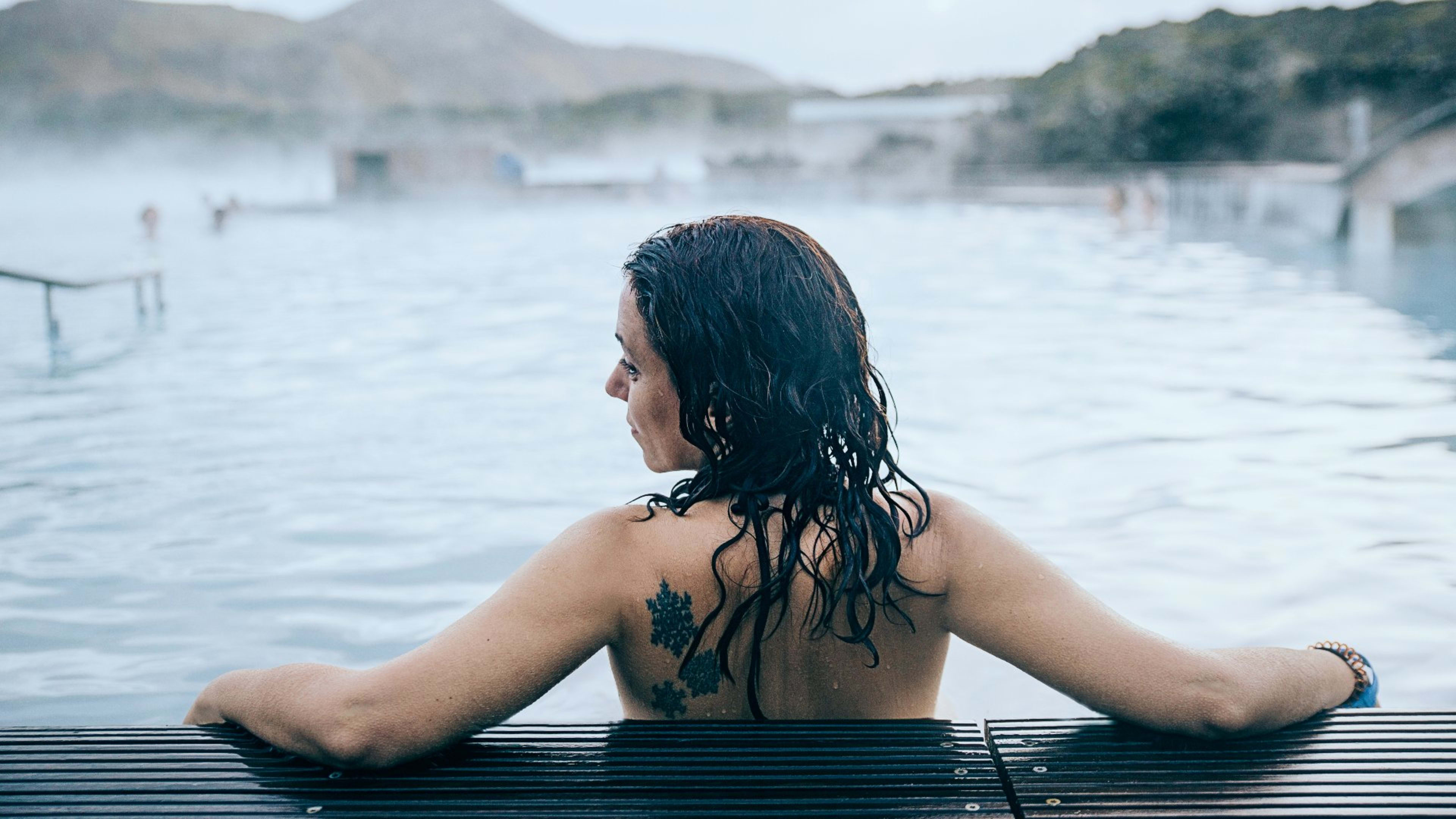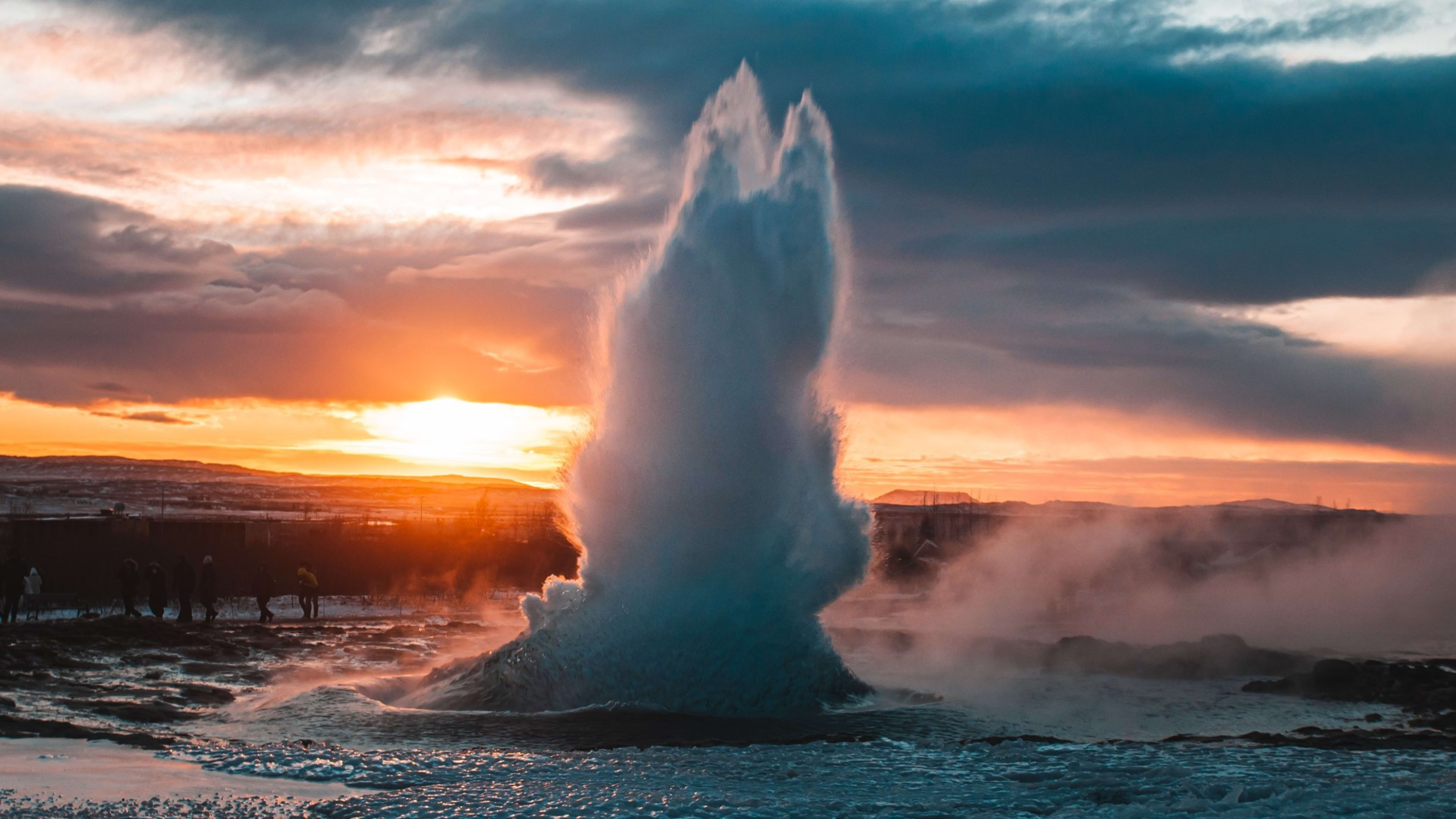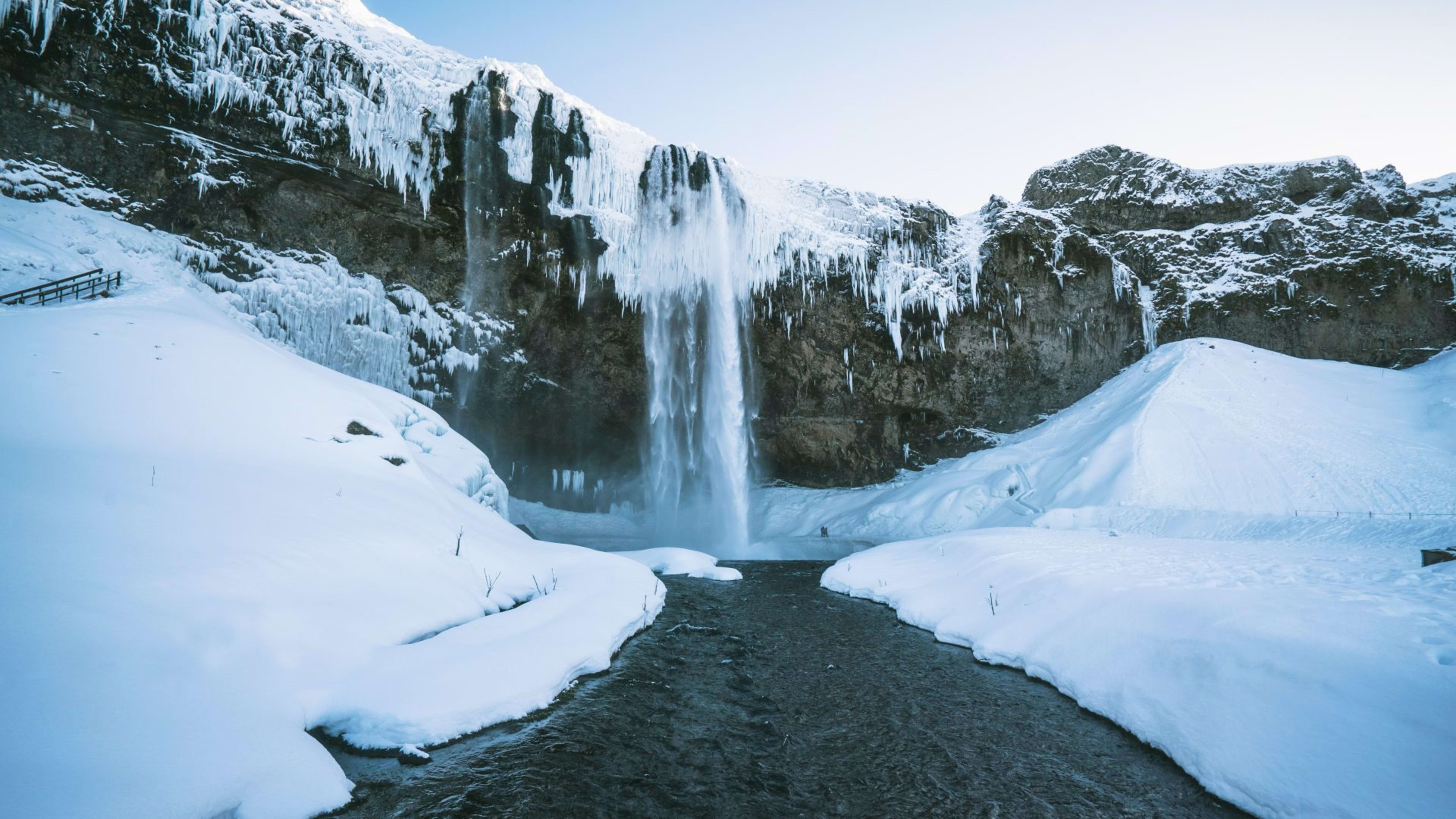Come enjoy a winter vacation in Iceland in February. At this time of year, you could hunt for the Northern Lights and see Reykjavík illuminated by the Winter Lights Festival. Or take on thrilling excursions like snorkeling, ice caving, and glacier walking.
February is a great time to enjoy the highlights of Iceland in all its serene winter beauty. Nature is out there for you to see and visit all year long after all. In February it might just be in its winter coat making it a memorable stay.
Get inspiration and find out top local tips to visit with this guide to Iceland in February.
- Browse Iceland winter vacation packages to start planning your February trip.
- Related: Your guide to visiting Iceland in winter.
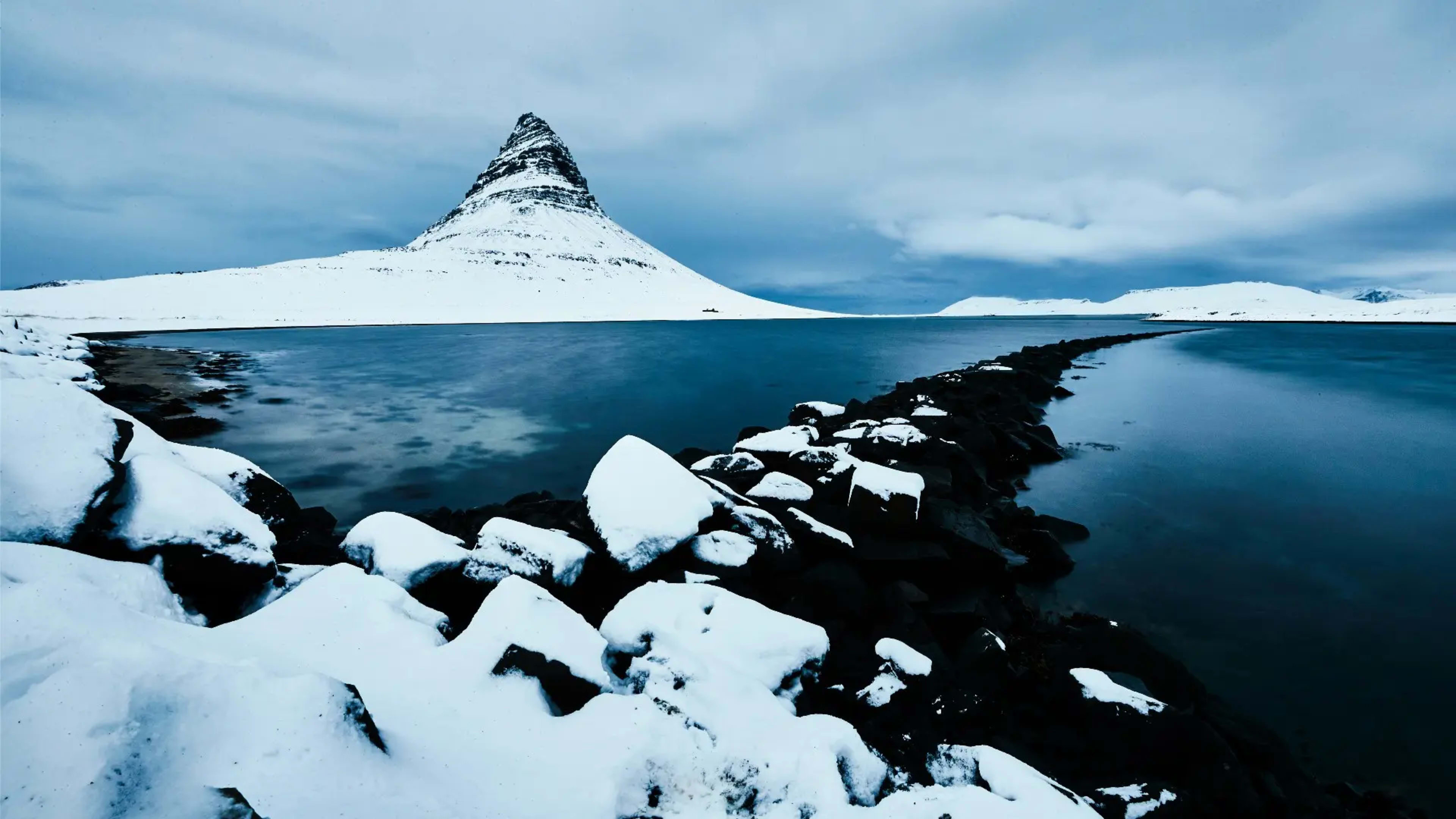
Is it worth visiting Iceland in February?
Definitely! February is a great month to visit Iceland. The winter months have huge benefits, so don’t be put off by the chilly weather and snowy conditions. If anything, the snow-capped mountains will make for an amazing backdrop to all your Insta photos.
In February, you’ll be able to visit most of the top highlights that Iceland is known for. That includes volcanoes, hot springs, mountains, ice caves, glaciers, and more.
- Wanna walk inside an ice cave? Choose one of these Iceland adventure packages.
You’ll get the best of both worlds, with enough daylight hours to sightsee and darkness to hunt for the Northern Lights. This phenomenon is the top reason to visit Iceland in winter. If the lights are on your bucket list, you can’t go wrong by visiting in February.
Travel at this time of year and you could also enjoy the healing warmth of geothermal pools and hot springs. Imagine spending your days enjoying adventures outdoors then rewarding yourself with a warming bathing experience at local swimming pools, hot tubs, or spas.

There’s something truly magical about soaking in naturally heated waters while snow falls on your face. And maybe, just maybe, you’ll be lucky enough to look up and see the Northern Lights give you a show to remember too.
Need more reasons to visit Iceland in February? Keep reading to see the kind of activities you could get up to and the best places to add to your itinerary.
- Would you rather visit earlier in January? The Iceland Tours blog has all the info you’ll need.
Top things to do in Iceland in February
During your February vacation in Iceland, you’ll enjoy a true taste of winter. Picture striking snow-covered volcanoes, steam rising from relaxing hot pools, and dancing lights in the night sky.
Visit Iceland in February and you could:
- Discover what makes Reykjavík a thriving cultural hub
- See magnificent waterfalls with large icicles and frost
- Experience surreal blue colors on ice cave tours
- Drive a snowmobile or hike atop a mighty glacier
- Spot Icelandic horses amidst the snowy Skagafjörður valley
- Enjoy an evening soak in a hot tub as the snow falls around you
- Chase the beauty of the Northern Lights
- Marvel at ice caps and volcanoes covered in snow
- Take a winter dip to snorkel between the Earth’s tectonic plates
- Walk along black sand beaches and admire impressive sea stacks
- Snap photos of erupting geysers and bubbling hot springs
- Rent a car to drive part of the Ring Road or explore the Golden Circle
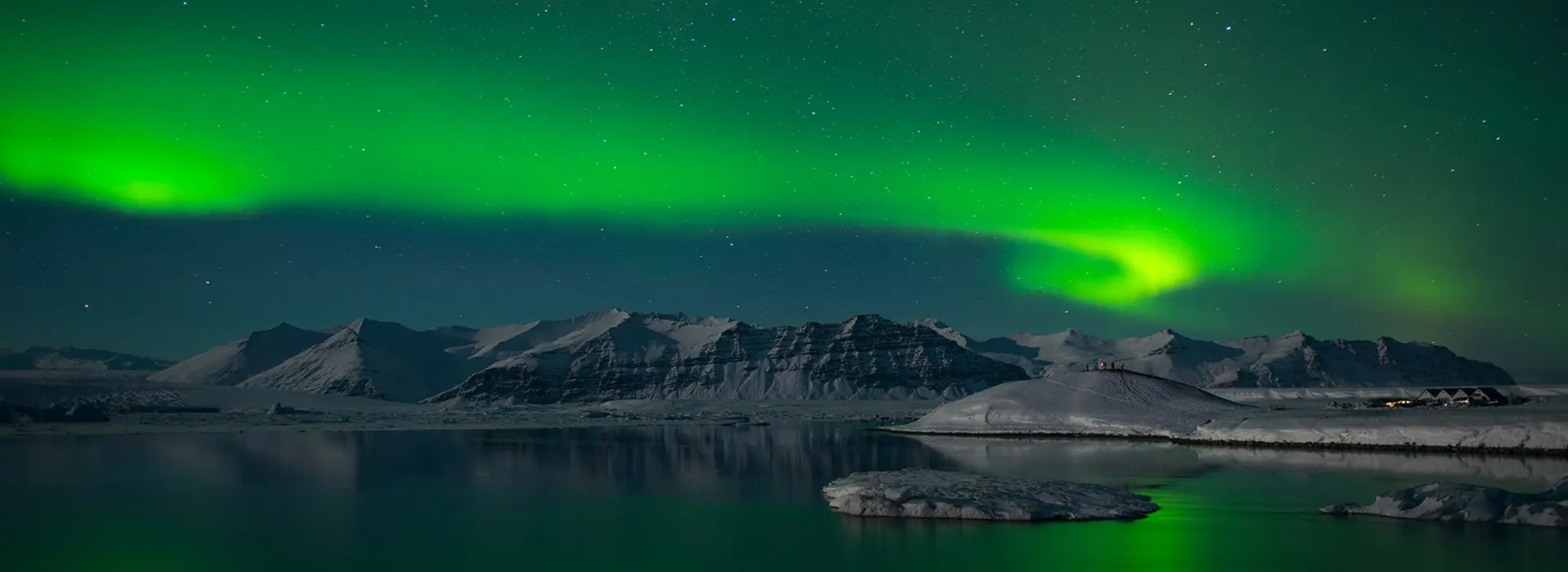
Events in Iceland in February
You might think that February is synonymous with Valentine’s Day. And if you’re the romantic type, charming Iceland makes a great Valentine’s Day destination.
Come enjoy a unique honeymoon or couples’ getaway with your SO in Iceland. Imagine cuddling under Northern Lights at night, spotting romantic waterfalls in the rosy light of day, or treating yourself to a spa experience together. That’ll make for a Valentine’s to remember!
As for local traditions and events, February is a vibrant month to visit Iceland, especially the capital Reykjavík.
Early in the month, check out the free Winter Lights Festival. This event was created to stimulate the cultural life of the city. It celebrates both the darkness of the winter months and the upcoming bright summer season.
Every night during the festival, light installations illuminate the city from 7 p.m. until 10 p.m. This is a fantastic and enchanting way to explore Reykjavík. You’ll only get that chance in February!
As part of the line-up, don’t miss Pool Night and Museum Night. On both these occasions, you’ll get to visit the swimming facilities and many of the capital’s museums for free and with illuminations.
- Check out all Iceland vacation packages to find your next getaway.
Best places to visit in Iceland in February
1. Þingvellir National Park and nearby attractions
Location: Southwest Iceland.
Why visit? Þingvellir (Thingvellir) National Park is a jewel of history and natural beauty in Iceland and so you can’t miss it. It’s a UNESCO World Heritage Site because it was here that the chiefs of the Viking era met to establish the first Icelandic parliament. That dates back to the 10th century, which is why it’s so impressive and important!
Don’t miss: As Þingvellir is part of the Golden Circle, you won’t want to miss the other 2 main features of the route. That includes the Gullfoss waterfall and the hot geysers of the Haukadalur valley.

2. Geothermal spas
Location: All over the country.
Why visit? Traveling to Iceland is not complete without at least one visit to a spa or heated pool. Thankfully they are dotted all over the country and easily accessible. After a day of exploration, put on your bathing suit and unwind in naturally heated waters.
For a budget-friendly alternative to a spa experience, most cities and towns have public pools and hot tubs available for free or for a small fee. You’ll feel just like a local when you visit them.
Don’t miss: The Blue Lagoon spa near Keflavík Airport, the Mývatn Nature Baths in North Iceland, and the Secret Lagoon along the Golden Circle.
3. West Iceland
Location: West Iceland.
Why visit? This region is located within easy reach of Reykjavík, making it an ideal destination in February. With fewer daylight hours than in summer, closer excursions and day trips are ideal in winter.
Here you’ll be able to admire a variety of landscapes and geological formations. You’ll find imposing waterfalls, sweeping lava fields, steep mountains, glaciers, volcanoes, beautiful coastal scenery, and more.

The stand-out of West Iceland is the Snæfellsnes peninsula. Here you could explore the Snæfellsjökull National Park, spot a mountain famous from Game of Thrones, and admire the second-largest fjord in Iceland, Breiðafjörður Bay.
Don’t miss: The Deildartunguhver hot spring. It’s the biggest of its kind in Iceland by water production per second. It’ll be an impressive sight for sure!
4. Waterfalls of Iceland
Location: All regions of Iceland.
Why visit? Wherever you are in Iceland, you’re probably not far from a scenic waterfall. In February, you could visit the frosty Hraunfossar waterfall near Reykholt, where water flows out from beneath a lava field. Or be awestruck by the top waterfalls of the south coast, Seljalandsfoss and Skógafoss. The Gullfoss and Faxi waterfalls are also must-sees along the Golden Circle.
Don’t miss: Everyone has a different favorite waterfall in Iceland, but in winter, Goðafoss, the ‘Waterfall of the Gods’, is particularly impressive. It is located in North Iceland.
- Look up day tours you could add to your itinerary in Iceland.
- Related: Your guide to the best waterfalls in Iceland.
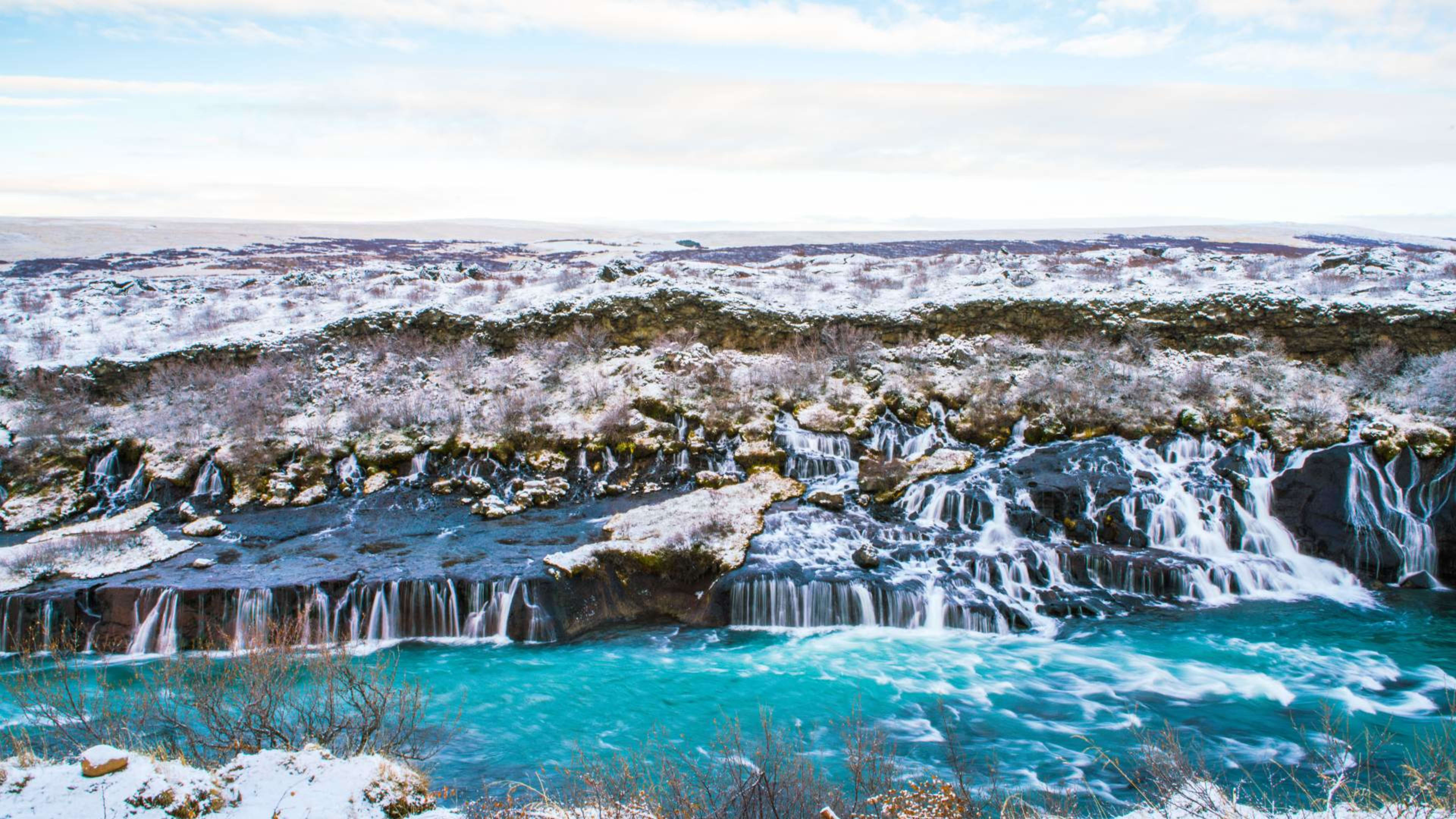
5. Reykjavík
Location: Southwest Iceland.
Why visit? Thanks to its cultural highlights and entertaining festival, you can’t miss a stay in Reykjavík in February. Walk underneath sparkling light shows, discover foodie hot spots, enjoy a night out with your friends, or visit one of the many interactive museums of the capital.
Don’t miss: The illuminations every night of the Winter Lights Festival.
- Check out multi-day tours from Reykjavík.
Frequently asked questions about visiting Iceland in February
Read on to find the answers to some of your top questions about visiting Iceland in February:
1. What is the weather like in Iceland in February?
February is still very much winter in Iceland, so you should expect cold conditions and precipitation, whether that’s snow or rain. It might also be very windy. On average there are lows of -1°C (30°F) and highs of 4°C (39°F).
2. What is the average temperature in Iceland in February?
In Reykjavík and in the south of Iceland, average temperatures in February are around 1°C (34°F). In the north of the country, you might experience averages closer to -2°C (28°F).
3. Is there snow in Iceland in February?
February is a month when you’re likely to experience precipitation. If the weather is cold enough, this means snow. At least the backdrop of your vacation photos will be spruced up by the snow-capped mountains and falling snowflakes.
4. How are the driving conditions in Iceland in February?
In winter, driving conditions in Iceland can be trickier than you might expect. Even if you’re used to winter driving, Iceland is likely to be different from what you know back home. That said, road trips are doable at this time of year.
Come prepared knowing safety precautions and local road regulations. To enjoy an Iceland self-drive tour, we recommend a shorter trip where you’ll focus on one region, like South Iceland. We also recommend you rent a sturdy vehicle, preferably with a 4×4 drive.
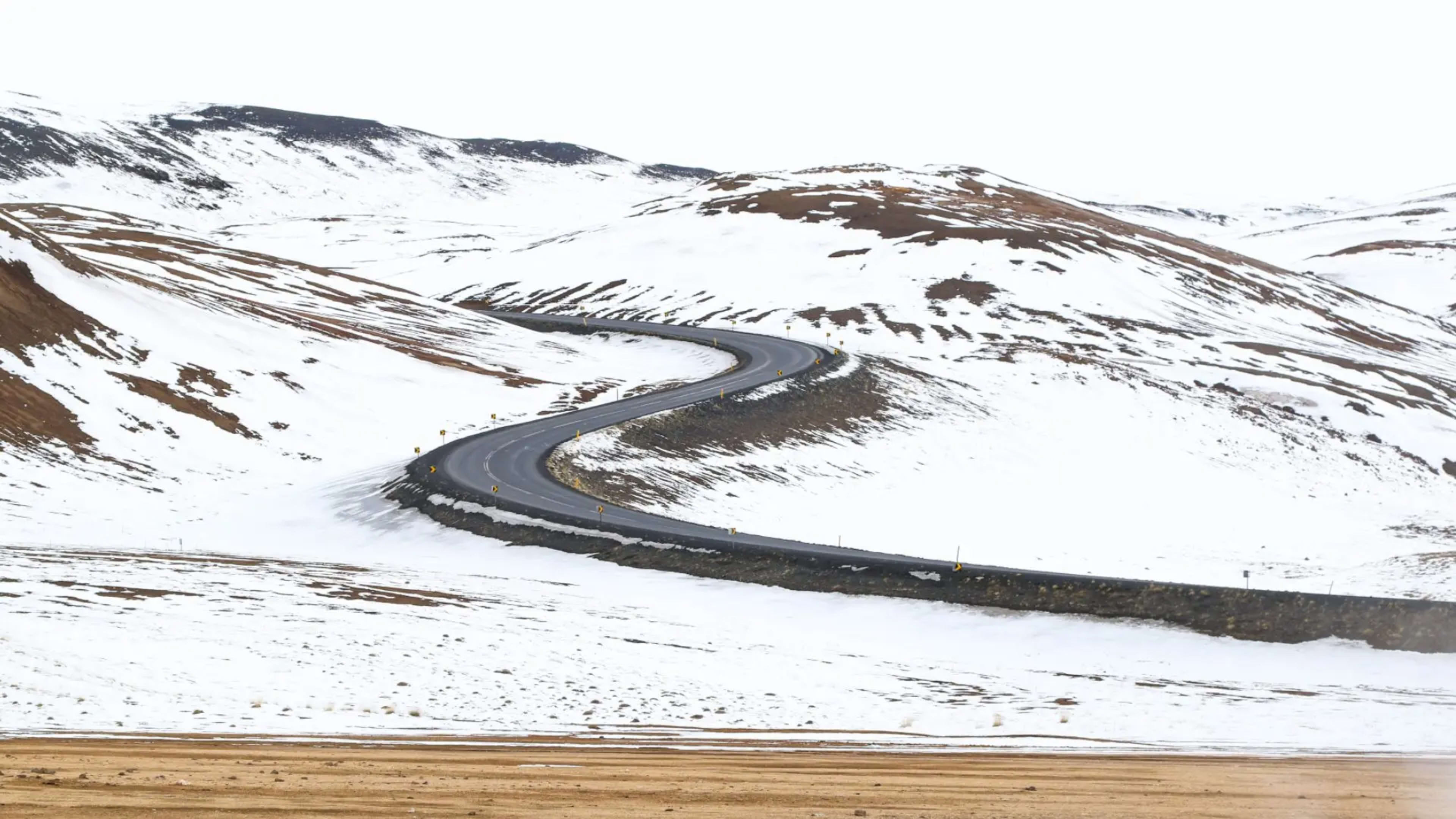
During your trip, you’ll want to check road and weather conditions every day. This way you’ll know what to expect and if you need to change your plans. Icelandic winter can bring high winds, slippery roads, and poor visibility so make sure to be flexible and prepared.
Want to skip the driving? Then pick a multi-day tour from Reykjavík or guided group tour instead. Stay in the capital and enjoy all its fun activities, nightlife, and foodie stops. And you won’t miss out on the beauty of the countryside, as you’ll have day trips and excursions to look forward to.
- Check out self-drive tours of Iceland.
- Related: Your guide to renting a car in Iceland.
5. How many hours of daylight does Iceland get in February?
In February, the days are getting longer and longer, offering a good balance of daylight hours (as opposed to late December and January when the days are very short).
Between the start and end of the month, there’s a big difference as daylight hours increase. In early February, the sun rises around 10:10 a.m. and sets by 5:15 p.m. By the end of February, sunrise happens by 8:30 a.m. and sunset around 6:45 p.m.
6. Can I see the Northern Lights in Iceland in February?
Yes, it’s possible to witness the Northern Lights in Iceland in February. At this time of year, the days are still short and the nights are long. This gives you more chances to see the colors against the dark skies of winter.
The Northern Lights, also called Aurora Borealis, are a natural phenomenon meaning there’s no promise you’ll get to see them.

In order to spot the lights, you need good solar activity, a clear dark sky without clouds, and low light pollution. If all these things align during your trip, you might well be lucky enough to see them. They are incredible to witness and come with bragging rights!
Maximize your chances of seeing the aurora by visiting one of the best places in Iceland to see the Northern Lights.
7. What to pack to visit Iceland in February
Now that you know what weather to expect, here’s what you need to pack for a visit to Iceland in February:
- Fleece or wool sweaters
- Insulated and waterproof jacket
- Waterproof (or snow) trousers
- Warm gloves, scarf, and hat
- Heated pads for your fingers and toes
- Thermal underwear (long johns) and socks
- Waterproof, lined boots
- Face and lip moisturizer
- Swimwear and towel to visit pools and spas
To summarize, you’ll want to bring plenty of layers to keep warm. The underlayers paired with your waterproof and windproof outerwear will give you the insulation you’ll need to enjoy the great outdoors.
When in doubt, pack all the layers you think you might need. As the conditions can change quickly in Iceland, having those extra sweaters with you means you can adjust easily and always be comfortable.
You can read more about preparing for a winter trip with our blog, tips for Iceland in winter – weather and packing guide.

Planning your trip to Iceland in February
Your February Iceland adventure is waiting just round the corner. Start planning your trip now by picking your favorite places to see and itinerary to match.
Browse the selection of winter packages that Iceland Tours offer, including Northern Lights tours. If you’re comfortable with winter driving, you could take on a self-drive itinerary. Or stay in Reykjavík and travel by bus on multi-day tours.
Once you’ve picked the package that suits you best, book it online. It’s easily done with only a 5% deposit. See you in Iceland this February!

